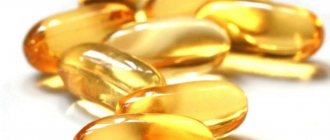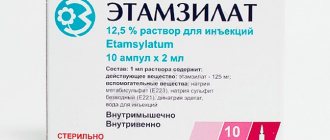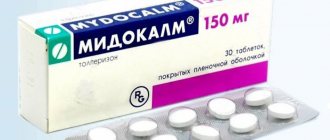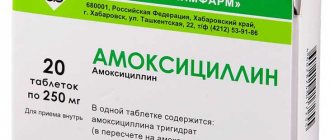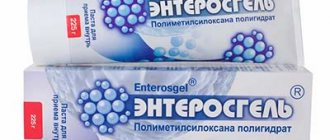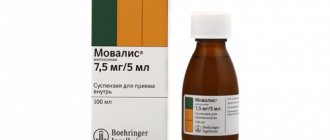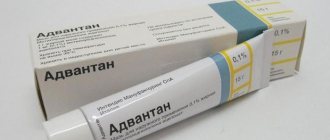Spirulina is a single-celled blue-green algae that has lived on Earth since the beginning of life. It gets its name from its microscopic spiral appearance. And the green color of spirulina comes from its chlorophyll content.
Spirulina's green-blue color is due to a pigment-protein complex called phycocyanin, which has been found in studies to help increase the production of bone marrow stem cells and anti-cancer natural killer NK cells.
Spirulina is at the very bottom of the food chain and is a plankton that can be eaten by various fish due to its richness in protein, fatty acids, carbohydrates and many other nutrients that are essential for life on Earth.
The article is based on the findings of 49 scientific studies
The article quotes the authors:
- University of Rhode Island in Kingston, Rhode Island, USA
- Laboratory of Chemotherapy and Cancer Metastasis Chemotherapy, Fuzhou University, Fuzhou, China
- Department of Functional Sciences, Victor Babes University of Medicine and Pharmacy, Timisoara, Romania
- Nutriguard Research, Encinitas, USA
- Departamento de Bioquímica, Facultad de Medicina, Universidad Nacional Autónoma de Mexico, Mexico
- Mabarrah Clinic, Alexandria, Egypt
- and other authors.
Please note that the numbers in parentheses (1, 2, 3, etc.) are clickable links to peer-reviewed scientific studies. You can follow these links and read the original source of information for the article.
What is spirulina
Spirulina, or Arthrospira
is a type of blue-green algae belonging to the genus of cyanobacteria, class Oscillatoraceae.
() The name spirulina was developed as a commercial designation for these algae. Humans eat two species: Arthrospira platensis
and
Arthrospira maxima.
SPIRULINA UNDER A MICROSCOPE
Spirulina has long been used as a dietary supplement for humans to provide protein in their diet, but only recently has science begun to pay attention to this algae and study it as a potential pharmaceutical. (, )
Spirulina has been found to activate macrophages , natural killer (NK) cells, immune T cells and B cells , and stimulate the production of interferon-gamma (IFN-γ) and other cytokines. ()
Some studies have identified the following potential properties of spirulina: anti-carcinogenic, immunostimulating, anti-DNA toxic, anti-hepatotoxic, anti-inflammatory, anti-diabetic and blood pressure lowering. ()
Spirulina contains large amounts of antioxidants and anti-inflammatory substances such as C-phycocyanin, one of the richest sources of plant protein, vitamin B12 and vitamin A. () Some studies have established the ability of C-phycocyanin to prevent chronic kidney disease () and inhibit the growth of cancerous tumors. ()
Phycocyanin-C is also a nitrogen storage molecule. Nitrogen atoms bind to heavy metals such as radioactive cesium-137, strontium-90 and potassium-40, which helps remove these radioactive elements from our body.
TOCOPHEROLS, PHYCOCYANIN AND SUPEROXIDE DISMUTASE HAVE AN ANTIOXIDANT EFFECT (R)
Several studies have shown that algae has a protective effect in the treatment of neurodegenerative disorders such as Parkinson's disease and Alzheimer's disease . ()
Additionally, there is evidence suggesting a role for spirulina in fighting chronic diseases such as diabetes , asthma , and cancer . ()
Chemical composition
The benefits of spirulina become obvious after studying its chemical composition. It includes more than 2 thousand enzymes in small doses, a set of non-essential and most essential amino acids. In terms of concentration of microelements and vitamins, algae is superior to many plant and animal products. Detailed data on the chemical composition are given in the tables.
Table - Nutritional value of spirulina, vitamins and microelements in its composition (per 100 g)
| The nutritional value | G | Vitamins | mg | Micro- and macroelements | mg |
| Protein | 57,47 | A | 0,029 | Potassium | 1363 |
| Carbohydrates | 23,9 | IN 1 | 2,38 | Calcium | 120 |
| Fats | 7,72 | AT 2 | 3,67 | Magnesium | 195 |
| Ash | 6,23 | AT 4 | 66 | Sodium | 1048 |
| Water | 4,68 | AT 5 | 3,48 | Phosphorus | 118 |
| Alimentary fiber | 3,6 | AT 6 | 0,37 | Iron | 28,5 |
| AT 9 | 0,094 | Manganese | 1,9 | ||
| WITH | 10,1 | Copper | 6,1 | ||
| E | 5 | Zinc | 2 | ||
| RR | 12,82 | Selenium | 0,007 | ||
Table No. 2 - Amino acids and fatty acids in spirulina (per 100 g)
| Essential amino acids | G | Nonessential amino acids | G | Fatty acid | G |
| Arginine | 4,15 | Alanin | 4,52 | Omega-3 | 0,82 |
| Valin | 3,51 | Aspartic | 5,8 | Omega-6 | 1,25 |
| Histidine | 1,09 | Glycine | 3,09 | Myristic | 0,08 |
| Isoleucine | 3,21 | Glutamic | 8,39 | Palmitic | 2,49 |
| Leucine | 4,95 | Proline | 2,38 | Stearic | 0,08 |
| Lysine | 3,03 | Serin | 2,99 | Palmitoleic | 0,32 |
| Methionine | 1,15 | Tyrosine | 2,58 | Oleic | 0,35 |
| Threonine | 2,97 | Cysteine | 0 | Linoleic | 1,25 |
| Tryptophan | 0,92 | Linolenic | 0,82 | ||
| Phenylalanine | 2,78 | ||||
Spirulina contains a lot of protein
Spirulina has been considered a health food and a major source of protein by the Mayans and Aztecs for thousands of years. This is due to the fact that seaweed contains approximately 65 – 71% of its weight in plant protein , this is the highest concentration of protein that has been found of any food.
It is also considered a complete protein, which means the seaweed contains 18 essential amino acids, as well as 10 other amino acids. In addition, the algae contains sulfolipids, which can be protective substances against HIV infection, maintaining the number of T-helper immune cells .
This makes spirulina an excellent source of protein for building muscle, improving strength and endurance, and promoting blood glucose balance and brain function.
Because spirulina is always eaten raw, it never loses any protein content compared to the approximately 50% protein loss in cooked animal foods. The protein in spirulina is also 4 times easier for the body to digest than animal proteins.
COMPARISON OF SPIRULINA AND RED MEAT
Besides protein, spirulina is the best source of gamma-linolenic acid (GLA), which is an anti-inflammatory, essential fatty acid needed for a strong immune system, as well as heart, joint and nervous system health.
Spirulina lives in salty alkaline water, where it is difficult for various bacterial toxins to form, so I consider this algae to be a fairly clean product.
Spirulina also contains:
- Iron (more than red meat)
- Vitamin E
- Zinc, calcium, selenium, potassium and manganese
- B vitamins
- Vitamin K
- Vitamin A as beta-carotene
- Iodine
- Metallothioneins are proteins with a high cysteine content that can bind zinc, copper, selenium, cadmium, mercury, silver, arsenic and heavy metals .
Harm of spirulina and contraindications
Despite all the positive aspects of using the product, there are cases when spirulina is more harmful than beneficial. According to doctors, dietary supplements should not be used for the following diseases and conditions:
- Long-term treatment with medications (especially potent ones);
- Increased blood pressure;
- Kidney failure;
- Taking immunostimulants;
- Endocrine diseases.
Collecting algae in contaminated areas and further consuming it can cause intoxication of the body or intestinal disorders. Therefore, you need to carefully choose a product that must meet all standards and have the highest quality mark.
The highest quality product is considered to be spirulina collected in India and Japan. It is not recommended to trust Chinese manufacturers.
Health Benefits of Spirulina
Spirulina protects the heart
High blood pressure and high cholesterol can increase your risk of developing heart disease. Scientists have studied the effects of spirulina on patients with type 2 diabetes. After 12 weeks of taking the supplement, there was a noticeable decrease in blood pressure. ()
In experiments on mice, when they were fed a diet high in fat and cholesterol, it was proven that receiving spirulina significantly reduced the level of total cholesterol in the blood . ()
CHANGES IN BLOOD LIPID LEVELS IN PATIENTS AFTER DAILY USE OF 4.5 GY. SPIRULINA FOR 6 WEEKS
In human studies, use of this algae has been shown to reduce cholesterol and LDL cholesterol in women. () It is known that total cholesterol and LDL cholesterol increase with age, which may be a cause of the development of cardiovascular diseases with aging . ()
Taking spirulina supplements reduces blood cholesterol and LDL-cholesterol to a greater extent in older people compared to younger people. ()
In experiments with rats, spirulina also protected heart cells from oxidation and damage. ()
Spirulina is useful in treating diabetes
Spirulina lowers blood glucose levels. () A study conducted with patients with type 2 diabetes showed that taking spirulina at a dose of 2 g. per day for 2 months reduces blood glucose levels. ()
Additionally, supplemental intake of this algae offers a greater chance of improving insulin sensitivity . ()
Spirulina reduces inflammation
Several active ingredients that spirulina contains have powerful antioxidant and anti-inflammatory properties . ()
The algae is able to inhibit (suppress the production of) pro-inflammatory cytokines such as tumor necrosis factor alpha ( TNF-alpha ), cyclooxygenase-2 ( COX-2 ) expression and reduces the production of prostaglandin E2 . ()
Spirulina was also able to slow the age-related increase in pro-inflammatory cytokines in the brains of aged male rats. ()
SCHEME OF ANTI-INFLAMMATORY ACTION OF SPIRULINA (https://link.springer.com)
In one study of older women, taking spirulina for one week led to decreased blood levels of the inflammatory cytokine IL-6 and a decrease in its production, indicating the algae's anti-inflammatory activity. ()
Consuming spirulina also increases the activity of natural killer (NK) cells and their anti-cancer ability. ()
Spirulina acts as an antioxidant
The use of spirulina promotes the activity of cellular antioxidant enzymes, which play a protective role in oxidative cell damage. ()
NADPH oxidase plays an important role in the development of cardiovascular diseases, obesity , diabetes , neurodegenerative disorders, various autoimmune diseases , allergies , skin lesions and arthrosis. () Spirulina contains phycocyanobilin (PCB), which has the ability to block this enzyme (NADPH oxidase). ()
Spirulina helps fight cancer
It has been shown that when spirulina is administered to mice that have been transplanted with liver tumor cells, their survival rate increases. The activity of lymphocytes in these mice is significantly higher than normal, which corresponds to the effect of the immune system. ()
MODULATING EFFECT OF SPIRULINA ON IMMUNE CELLS
Daily consumption of this supplement maintains or improves the normal functioning of cells, which prevents the occurrence of malignant tumors or inhibits the growth of existing cancers. ()
Spirulina reduces fatigue
After one week of receiving spirulina, the experiment participants showed an increase in endurance and strength during physical training. A survey of participants showed an improvement in feelings of physical and mental fatigue within 4 hours after the first consumption of seaweed. ()
Spirulina protects the brain
It seems that spirulina has protective properties for neurons during toxic damage to the body. Specific doses of this algae significantly reduced the decline in cell response to dopamine when exposed to toxins . ()
Additionally, spirulina significantly increases neuron density , which indicates neurogenesis, or the formation of new neurons. It protects stem cells in the brain from shrinking due to inflammation. ().
ENVIRONMENTAL POLLUTION INFLUENCES THE DEVELOPMENT OF ALZHEIMER'S DISEASE THROUGH SEVERAL MECHANISMS (www.frontiersin.org)
The algae demonstrates mechanisms that can prevent the accumulation of proteins and toxins, and on this basis, stop the development of Alzheimer's disease and Parkinson's disease when exposed to toxic effects. ()
Spirulina reduces allergy activity
Allergic rhinitis causes nasal congestion, sneezing, itching, watery eyes, and other similar symptoms. As found in the study, spirulina can effectively reduce all of these symptoms. ()
Consuming algae can also suppress the secretion of pro-inflammatory cytokines that contribute to allergies. ()
Spirulina improves kidney function
Indicators of urea and creatinine levels in the blood are criteria for kidney disease . Adding spirulina to the diet significantly reduces blood urea nitrogen and creatinine levels. ()
Spirulina protects the liver
The vitamins and phenolic compounds found in spirulina may work together to help protect the liver. () In rats, the administration of spirulina reduced lipid oxidation, reduced the level of oxidative stress, and normalized liver enzymes. ()
SCHEME OF THE EFFECT OF SPIRULINA IN PROTECTING THE LIVER FROM FIBROSIS ()
People with fatty liver disease who took 4.5 g. spirulina per day for 6 months showed improvement in liver function . ()
Spirulina removes arsenic from the body
In rats, an extract of this algae was able to eliminate 90% of arsenic in the liver. ()
In human experiments, spirulina extract combined with zinc helped reduce symptoms of arsenic poisoning and reduce the amount of arsenic in the body. ()
Beneficial properties of spirulina
The algae belongs to the genus of cyanobacteria. It is rich not only in nutrients, but also in vitamins. B2, B6 and B12 regulate cholesterol in the blood, normalize metabolism and take an active part in the process of blood creation.
Vitamins E and PP have a beneficial effect on the functioning of the digestive, nervous, cardiovascular and endocrine systems. Their content in spirulina is much higher than in meat foods. Seaweed is an excellent source of protein for vegetarians and contains a lot of easily digestible iron.
Spirulina - beneficial properties:
- antioxidant - high content of carotene, 10 times more than in carrots, contains unsaturated omega and amino acids;
- anti-inflammatory - stimulates regeneration processes, reduces the appearance of acne and dermatitis;
- cleansing - removes waste and toxins from the body, strengthens the immune system;
- anti-allergenic - helps get rid of allergic reactions to pollen and other types of plants.
What else can spirulina do for you? It is good for eye health and improves vision and memory. Algae speeds up metabolism, which promotes weight loss. It is a natural source of energy and an inhibitor of cancer cell growth.
Spirulina - what cures? It has good wound-healing properties and improves skin condition and prevents early aging. Algae can treat liver diseases - it increases its barrier mechanisms and cleanses it of toxins.
Spirulina restores intestinal microflora and is used in the treatment of myositis, osteochondrosis and arthritis. It stimulates growth processes in the body, so it is often necessary for children during adolescence.
Heart diseases can also be alleviated with the participation of this supplement - angina pectoris, atherosclerosis and coronary heart disease. Spirulina has been successfully used in the treatment of myopia and other vision problems.
Its use is indicated for hepatitis, chronic bronchitis and tuberculosis. But the most important merit of the plant is its ability to slow down the growth of cancer cells. Spirulina is prescribed after courses of radiotherapy and chemotherapy. It prevents the development of metastases and new malignant tumors.
Despite all the versatility and uniqueness of the plant, it is contraindicated for people with serious health problems and individual intolerance to its components. If you have serious stomach problems, blood pressure or kidney failure, you should consult your doctor about taking this supplement.
Spirulina for skin
Spirulina is beneficial for the skin due to its high content of gamma-linoleic acid. This is an effective measure to prevent acne and the aging process. It helps saturate the skin with nutrients, remove toxins from it and improve cellular metabolism, regeneration and renewal of the epidermis.
Spirulina for skin
The use of spirulina for the skin is possible at home. A simple algae mask will help cure acne, improve tone, and give a rejuvenating effect.
You may be interested in: Facial cleansing by a cosmetologist
Pour 5 spirulina capsules with 30 ml of clean warm water and apply the mixture in a thin layer to the skin of the face. Leave for half an hour, then rinse with warm water. The course lasts one week. It can be repeated after 10 days. To prevent wrinkles, use the mask before bed, 2-3 times a week.
Spirulina for the stomach
Spirulina for the stomach is used as an auxiliary supplement for the treatment of diseases that are not in the acute stage. These are chronic hepatitis, cholecystitis, liver cirrhosis, gastritis and colitis, gastric ulcer and duodenal ulcer. The algae is indicated for resection and various digestive disorders.
Its use is due to the plant’s abilities - increasing appetite, reducing secretion, inhibiting pepsin activity and preventing the development of infections.
Spirulina does not burden the digestive system and contains a number of nutrients necessary for humans. This is a metabolite activator that acts at the cellular level and removes toxins from the body, promoting regular bowel cleansing.
Seaweed is a good basis for a protein diet. It helps to lose excess weight and prevents excessive food consumption. If you take the supplement half an hour before meals, it will coat the stomach and create the effect of its fullness.
Additional Benefits of Spirulina
- Spirulina reduces the levels of triglycerides , total cholesterol and LDL (“bad”) cholesterol in the blood. ()
- Spirulina can help treat sickle cell anemia . ()
- Adding spirulina to the diet helped increase the number of CD4 immune cells in HIV-1. ()
- Regular consumption of spirulina reduces body mass index (BMI) and restores the endothelium of blood vessels. ()
- Spirulina can help treat hepatitis C. ()
- Receiving 4.5 g. Spirulina for 12 weeks reduced oxidative stress in people with hypertension . ()
- Spirulina has an antiproliferative effect on pancreatic cancer cells. ()
- Spirulina extract, enriched with selenium, can protect the liver from alcohol damage. ()
Treatment regimens
For each disease, it is advisable to adhere to an individual dosage schedule, selecting the optimal dose, supplementing it with other homeopathic remedies. Below are examples of treatment for various diseases.
- Chronic constipation. The algae is taken for a month once a day at a dose of 1-2 g.
- Removal of radionuclides. In the morning, on an empty stomach, drink 200 ml of kefir with the addition of 3 g of spirulina; dinner is replaced with kefir with the addition of 1 g of algae. The cleansing course lasts three to four weeks.
- VSD. Mix a glass of chopped walnuts, 200 ml of fresh honey, 100 g of crushed aloe and 20 g of dry seaweed. Take three times a day, a tablespoon after meals. The course of treatment is a month.
- Ischemia and atherosclerosis. Use spirulina in tablets or capsules. The recommended dosage is one tablet three times a day. The duration of treatment is three months.
- Diabetes. For sustainable improvement of diabetes mellitus, complex therapy with homeopathic medicines is recommended. An infusion is prepared from blueberry leaves, nettles, and dandelion roots - a tablespoon of each ingredient per glass of water. The infusion is taken 100 ml before meals, twice a day. At the same time, take one capsule or tablet of spirulina up to six times a day and “Apilak” - one tablet three times a day.
- Food poisoning. Mix a tablespoon of apple cider vinegar with 1 g of seaweed and dilute it in 100 ml of water. Take once.
- Hangover syndrome. Add lemon juice and two to four spirulina tablets to a glass of water.
Dry spirulina powder can be added to various dishes. Because of its specific smell, it is combined with spices - herbs, garlic. It is undesirable to subject the algae to heat treatment - this will lead to the destruction of some of the valuable substances.
Spirulina dosage
Many studies have examined the effects of spirulina at various doses. Dosage in the amount of 1-8 g. per day influences patients and leads to positive effects. But the specific dose depends on the state of health and disease.
Studies have shown that a dose of 6 g. spirulina per day for a long time (6 months) did not lead to side effects or complications.
In addition, it is worth considering the manufacturer of spirulina, because the content of beneficial and medicinal substances in this algae depends on the growing environment . The best growing conditions produce the most effective spirulina.
THE BEST CHOICE IS SPIRULINA POWDER, WHICH IS NOT AFFECTED BY TEMPERATURE WHEN PRESSED INTO TABLETS
In addition to being a rich source of essential vitamins and minerals, spirulina is also a powerful detoxifying . Therefore, it is likely that if you use a high dose of spirulina from the very beginning, you may experience a “sobering-up reaction” - the effect of ridding your body of toxins. For this reason, it is best to start taking spirulina with a small dose and gradually increase it.
Also remember to increase your drinking water intake when taking spirulina to help it be absorbed into your body.
Growing spirulina at home
To grow spirulina at home you will need the following tools:
- Aquarium. You can purchase a regular rectangular or specialized flat one.
- Filtered water. Only purified water is suitable for growing crops.
- Thermometer. Spirulina thrives in warm water, so the temperature needs to be controlled.
- Growing kit or "starter culture". The set can be ordered online in specialized stores. This is a small container of water containing some live algae. The packaging indicates in detail how and in what proportion to “sow” the algae.
Important! Be sure to make sure that spirulina is obtained from clean sources, as algae colonies are capable of absorbing harmful substances dissolved in water bodies.
- Minerals. They will be needed for fertilizer. This algae survives only in an environment similar to its natural (sea) environment. Mineral supplements can be purchased at garden centers or ordered online. The additives include various salts, including urea, citric acid, magnesium, phosphorus, calcium, and iron.
- Scoop. You will need it to collect algae.
The sequence of further actions is as follows:
- The container is placed on a windowsill or other place where there is a lot of sunlight (indirect rays!);
- Purified water is poured into the aquarium;
- Add minerals (1-2 tablespoons);
- Stir the water;
- Place seaweed into the mixture.
The water temperature should always be kept at 36-37 degrees, this is the most “favorite” temperature for spirulina. For this purpose, you can purchase an aquarium heater. Plant colonies survive in colder water, but in smaller numbers.
In order for a plant to grow faster, it needs oxygen. To do this, the water in the container needs to be stirred every day. From the moment the algae is immersed in the aquarium, at least 1-2 weeks must pass before the algae begins to grow.
If you notice that spirulina is not growing or growing little, try adding more minerals.
After about a month, you can harvest the first harvest. To do this, carefully collect some algae with a scoop and transfer it to a sieve. When the excess liquid has drained, the algae can be eaten - added to a salad, juice or other dish.
Choosing the best spirulina producer
There are many types of spirulina supplements, so it is important to be mindful and scrupulous when choosing a supplement manufacturer. Because spirulina grown in an uncontrolled environment can absorb large amounts of heavy metals and other toxins , it is important to choose spirulina that is certified and safe to produce.
THIS IS WHAT SPIRULINA PRODUCTION COULD LOOK LIKE IN ASIAN COUNTRIES AND INDIA.
It is also important to understand that many spirulina producers are chasing quantity rather than quality. That is why their product lacks many useful substances. For example, when comparing spirulina grown in Russia and spirulina from China, Russian seaweed is much more packed with beneficial ingredients .
THIS IS WHAT SPIRULINA PRODUCTION LOOKS LIKE IN RUSSIA
It is worth noting that some spirulina products that contain contaminants may cause allergic reactions or digestive problems.
A 2013 study published in the Saudi Journal of Biological Sciences noted that lead, mercury, cadmium and arsenic were found in more than 25 spirulina samples .
Spirulina tablets are the most popular SUPERFOOD
Superfoods have become especially popular in recent years. These are natural products that contain a large number of substances beneficial to our health: vitamins, minerals, antioxidants, amino acids.
They are close to dietary supplements, but still placed in a separate category. These can be berries, leaves, roots, seeds, algae, which naturally grow in inaccessible, remote corners of the planet. For example, acai and goji berries, chia seeds, chlorella.
According to the World Health Organization, today spirulina is one of the important supplements in the diet of a healthy person.
It is the best-selling superfood in the world.
Side effects of spirulina
Spirulina is a safe source of protein, nutrients, vitamins and minerals with a long history of use. Taking spirulina most likely won't cause your body to overreact, but some effects may still occur.
Here are some of the most noticeable reactions you may experience when taking spirulina:
- Slight increase in body temperature – The high protein content of spirulina increases metabolism, which can raise body temperature.
- Dark Green Stool – Spirulina is powerful in removing accumulated waste in the colon, which can result in darker colored stool. In addition, spirulina is an algae with a high content of chlorophyll, which turns stool green.
- Gas in the gut – Gas buildup may mean your digestive system is not functioning properly.
- Excitability - Your body converts protein into heat energy, which can cause temporary feelings of restlessness.
- Itchy skin - this is caused by the process of cleansing the intestines and the whole body, and is a temporary reaction.
- Drowsiness is caused by the detoxification process taking place and may mean that your body is exhausted and needs more rest. Although such drowsiness may be due to the activation of some part of your immune system, so it is worth monitoring for allergic reactions.
- This type of algae also contains phenylalanine, which can cause problems in people who have phenylketonuria.
Also keep in mind that while spirulina is completely natural to our bodies and is generally considered a healthy supplement, there are some important contraindications that you should be aware of.
Avoid taking spirulina if:
- You have a severe allergy to seafood
- You are allergic to iodine
- Pregnant
- Getting drips
- You have a fever (high body temperature).
If you have been diagnosed with hyperthyroidism , consult your doctor before starting to take spirulina.
The information on this site has not been evaluated by any medical organization. We do not seek to diagnose or treat any disease. The information on the site is provided for educational purposes only. You should consult your physician before acting on information from this site, especially if you are pregnant, nursing, taking medications, or have any medical condition.
Rate this article
Average 5 Total votes (1)
Release forms
Before taking spirulina, you need to read the instructions. Dosage and method of administration depend on the dosage form. Algae goes on sale in different forms:
- frozen;
- in tablets;
- in flakes;
- in powder;
- in the form of syrup;
- in capsules.
For internal use, the most common use of spirulina is in tablets. The standard dosage for most diseases is one or two pieces twice a day.
Russian preparations of spirulina, “Sochi”, “VEL” have proven themselves well. Frozen seaweed of high quality is produced by the Samara enterprise Spirulina-S LLC. Among imported manufacturers, drugs from the Chinese and Indian “Aurospira” are in demand.
Analogues of products with spirulina
Analogues of products containing spirulina are drugs that contain different substances with similar pharmacological properties. Analogues include:
- the drug “Transfer Factor” - used to restore immunity, cleanses the body of toxins and waste;
- biological supplement “Vita-Provider” – used for weight correction;
- biological additive "Oleksin" - for the prevention and treatment of cancer, intoxication, gynecological and cardiovascular diseases, cleansing the body and protecting against aging;
- the drug "Likam" - for strengthening blood vessels, strengthening the immune system, therapy for oncology;
- drug "Brewer's yeast" - for a lack of B vitamins, anemia, diabetes, alcoholism, neuralgia, metabolic disorders, recovery from illnesses.
All about spirulina: what it contains and how it is useful.
21.03.2017
Category: Articles, Health
On the Internet, we came across an article that describes the benefits of spirulina as fully as possible. We publish it in its entirety with reference to the source, of course.
Spirulina is a unique food product. Clinical data obtained from leading medical research and treatment institutions in the world have shown that the biologically active substances of the natural microalgae Spirulina, acting in combination, have high functional activity and exhibit various properties.
It has been established that Spirulina:
- is a source of vitamins, essential amino acids, polyunsaturated fatty acids, antioxidants, macro- and microelements;
- contains the most important vitamins and microelements in organic form, which significantly facilitates their absorption in the human gastrointestinal tract and makes it possible to recommend the product for the prevention of microelement deficiency and, above all, iron deficiency conditions;
- normalizes and activates metabolism;
- improves the absorption of vitamins and microelements of food;
- helps normalize the composition (increases the number of lactic acid bacteria) and functional activity of intestinal microflora;
- lowers excess blood sugar, reduces the need for sugar-lowering drugs and insulin in patients with diabetes;
- in children's nutrition, it promotes more complete absorption of food, reduces the risk of gastrointestinal diseases, improves the immune system, significantly reduces the incidence of acute respiratory infections, and facilitates the adaptation of children to the conditions of preschool institutions;
- increases the body's nonspecific resistance to the effects of unfavorable environmental factors;
- binds and removes xenobiotics from the body;
- stimulates the activity of the hematopoietic system;
- destroys putrefactive bacteria and helps regenerate microflora that produces vitamins in the gastrointestinal tract, including vitamin B12.
From the history.
In 1964, the Belgian botanist J. Leonard discovered a tribe of aborigines in the African forests near Lake Chad, whose life had not changed over the past several decades, and maybe hundreds of thousands of years. These people were neither hunting nor farming.
They found everything they needed around them - the forests abound in fruits, berries, roots and other food. Civilization was unfamiliar to them. Leonard's attention was drawn to one fact - these people lived to a ripe old age (the average life expectancy in Africa is 35 years) and at the same time practically did not get sick!
All the old people had healthy, well-preserved teeth and thick black hair. Leonard drew attention to the green cakes that the savages ate like bread. They were made from biomass that was collected from the surface of the lake and dried in the sun.
Upon examination, it turned out that this mud consists of a filamentous blue-green algae (Spirulina platensis) spirulina . This algae has been known to science for a long time. It is about 700 million years old and is one of the first photosynthetic life forms on Earth.
Earlier in 1521, Bernard Diasdel Castillo mentioned a product called tecu-itlatl, which was a common dish among the Aztecs. These were dried layers of Spirulina growing in the alkaline water of Lake Toxcoco near Mexico City. It is the increased alkalinity of water that is a favorable factor for the development of Spirulina. Only two lakes in the world meet these requirements - Toxcoco and Chad.
After Leonard's discovery, scientists began studying the wonderful algae. In 1977 - 1980 G. Chammoro - official expert on food toxicology of UNIDO (Vienna) confirmed the negative toxicological result from the use of Spirulina. It was also found that spirulina protein is comparable to egg yolk protein, which is a sample of FAO, and the medicinal properties of spirulina preparations exceeded all imaginable expectations of scientists.
Since the early 80s, spirulina began its victorious march around the world as a dietary supplement. Today, the daily diet of a Japanese or American is unthinkable without 3-5 grams of it. It is included in many finished products and is also sold in pure form as powder or tablets.
This algae received a permanent residence permit at the Cosmonaut Training Center. Athletes also take it regularly. Spirulina received such recognition that already in the early 80s Moscow State University. M.V. Lomonosov received an order from the USSR Ministry of Defense (!) to develop methods for growing spirulina in artificial conditions and producing medical preparations based on it.
Spirulina platensis is a multicellular spiral filamentous microalgae. Spirulina biomass is a collection of blue-green threads consisting of cylindrical cells arranged in unbranched threads. The shape of the filaments (spiral) is the generic characteristic of Spirulina, but the parameters of the spiral vary among different species. The pitch and length of the spiral may vary depending on growing conditions. Cell diameter is from 1 to 3 µm in small species and from 3 to 12 µm in large ones.
Spirulina is the only living organism that has lived on Earth unchanged for hundreds of millions of years precisely due to its unique biochemical composition. This is a carefully balanced set of vitamins, minerals and amino acids by nature, enclosed in an easily digestible mucoprotein membrane.
The protein content in spirulina reaches 70%, that is, in 10 grams of algae there is as much of it as in a kilogram of beef, and beta-carotene - as in 10 kilograms of dry carrots!
Spirulina contains large quantities of the blue pigment phycocyanin - the only known substance that can stop the growth of cancer cells . Phycocyanin is not found in any other products.
Gamma-lanolinic acid is found only in Spirulina and breast milk . This substance is necessary for the prevention and treatment of arthritis. Glutamic acid reduces the need for alcohol, stabilizes mental abilities, and is the main food for brain cells.
Tyrosine - the “elixir of youth” - slows down the aging of the body and prevents gray hair. Cystine - ensures the functioning of the pancreas. Arginine - increases sexual activity, helps cleanse the blood of toxins and waste. Inositol - maintains a healthy liver, promotes the elimination of carcinogens and excess female sex hormones, and normalizes cholesterol levels. Thiamine - strengthens the nervous system, reduces fatigue, normalizes sleep, heart rate, and eliminates shortness of breath. Folic acid is necessary for the formation of hemoglobin.
In total, Spirulina contains about 2000 (!) vitamins, minerals, amino acids, including essential amino acids and enzymes.
Spirulina has unique properties, this has been proven by studies conducted in leading medical, scientific and treatment institutions in the world:
- significant suppression of all influenza serotypes;
- compensation for vitamin and mineral deficiency;
- normalization of the blood count; reduces the level of fats in the blood, serves as a preventive measure for atherosclerosis and coronary diseases;
- acceleration of wound scarring and burn healing;
- cellular and organismal rejuvenation;
- ensuring resistance to radiation exposure;
- normalizes metabolism, helps restore immune status, prevents the accumulation of excess weight;
- helps in the treatment of vascular diseases, ulcers, joint inflammation, osteochondrosis, hypertension, weakness, insomnia, hemorrhoids;
- in Asian countries it is known as an effective means of combating certain types of cancer, immunodeficiency, and allergies;
- removes heavy metals, toxins, radionuclides from the body, prevents a decrease in the level of leukocytes during radiotherapy;
- in obstetrics and gynecology, it helps to reduce the number of diseases with abnormal course of pregnancy and the postpartum period, helps to increase lactation;
- is a “cleaner” of the body, especially for the population of environmentally polluted areas;
- a powerful therapeutic and prophylactic agent for healthy people, increases performance, develops immunity and resistance to diseases.
According to the World Health Organization (WHO), it protects against at least 70% of diseases.
Spirulina treats not individual diseases, but the body as a whole. This is its main difference from all other medications. Since each individual disease is not an independent process, but represents the body’s reaction to serious physiological disturbances in its functioning, for example, metabolism, conventional medications suppress only these symptoms without eliminating the cause of the disease.
As a result, these diseases become chronic and, in turn, provoke other concomitant diseases. Unlike them, Spirulina restores impaired body functions and forces it to fight diseases on its own.
As a powerful antioxidant, Spirulina prevents premature aging, which is primarily the result of oxidative processes in the body. With intensive use of Spirulina, cases of restoration of early gray hair have been noted, which was until now considered an irreversible process.
The unique properties of Spirulina, as an immunostimulant, allow the body to effectively resist any viral and bacterial infections. In addition, Spirulina restores the functioning of the pancreas. Diabetic patients undergoing treatment with Spirulina note a sharp decrease in blood sugar levels. With constant use of Spirulina, the therapeutic dose of insulin can be significantly reduced.
In the conditions of modern civilization, Spirulina’s ability to effectively remove waste, toxins and radionuclides from the body is especially relevant. For residents of large cities and environmentally unfavorable areas, workers of chemical plants and nuclear power plants, miners and all other people living or working in hazardous conditions, Spirulina should become a regular element of their daily diet.
Biologists, physicists, physicians, nutritionists and other specialists from many countries, including America, Japan, Germany, Israel, the Netherlands, etc., have studied Spirulina for many years and have come to general and clear conclusions about its composition, the functions of the active components and the mechanism their actions.
1. Spirulina is superior to any other healthy food product in terms of protein content, which reaches 60-70%. Spirulina also contains an abundance of balanced combinations of vital elements such as carotene, gamma lanolinic acid, polysaccharides, vitamin B12 and chlorophyll.
The effectiveness of these compositions is now beyond doubt and is especially important for strengthening the human immune system, its vital physiological functions, improving metabolism, preventing and treating certain diseases, etc. Currently, many people around the world, especially in developed countries, use both medicinal and food products and tonic drinks based on Spirulina.
These products are widely used as an aid in the treatment of diseases such as cancer, hypertension, gastritis and ulcers, liver diseases, diabetes, anemia, etc.
2. Spirulina contains more complex iron than any other food. It is complex iron that can be easily absorbed by the human body. Spirulina contains 58 times more iron than raw spinach and 28 times more than raw beef liver.
3. The beta-carotene content is also higher than any other food product. Beta carotene determines how our cells communicate with each other. Beta-carotene opens membrane communication channels of cancer and precancerous cells, allowing them to receive immune signals to stop or stop dividing.
That is why foods rich in beta-carotene can not only have a preventive anti-cancer effect, but also inhibit the development of cancer cells. Anyone with cancer or at risk needs to take large doses of beta-carotene. Research shows that beta-carotene lowers cholesterol, heals wounds and reduces the size of tumors. Natural beta-carotene is superior to the synthetic drug in many both chemical and physical indicators.
It is better absorbed and does not tend to accumulate with subsequent signs of intoxication of the body. Spirulina does not cause any toxic side effects, as is the case with some other blue-green algae.
4. Spirulina is the richest source of natural antioxidants. It contains almost all known antioxidants, including zinc, magnesium, selenium, and copper, amino acid methionine, vitamin E, vitamin B1 and B6, and Beta-carotene. Spirulina is rich in chlorophyll, which it contains significantly more than wheat sprouts or alfalfa.
5. Spirulina is the only green natural food rich in the vital fatty acid gamma-linolenic acid (GLA). Spirulina contains more GLA than any other nutritional source. GLA lowers blood cholesterol and blood pressure, and also relieves premenstrual pain, eczema and other skin conditions. This acid makes human skin and hair shiny, resilient and full of health. GLA also appears to be an anti-inflammatory agent and a reliever of the symptoms of arthritic diseases. Spirulina has been found to help treat arthritis.
6. Phycocyanin, which is the natural blue pigment of spirulina, has not been found in any other plant food source. Phycocyanin has now shown positive results in the treatment of cancer in animals. It also has a stimulating effect on the immune system.
7. Glycolipids that were found in spirulina showed activity against the AIDS virus.
8. Spirulina is a rich natural source of phenylalanine weight loss drugs based on the effect of significant appetite suppression. The nutritional value of Spirulina provides a low-calorie diet without the energy wastage and health-damaging nutritional deficiencies that plague most modern weight loss programs. Spirulina satisfies hunger because it meets the body's natural physical and biochemical needs.
9. Spirulina also acts as a functional food, feeding beneficial intestinal flora , especially Lactobacillus and Rifidus. Maintaining the required levels of these bacteria in the intestines reduces potential problems resulting from the activity of opposing pathogens, such as E. coli and Candida albicans. Studies have shown that adding Spirulina to daily food increases the positive response of intestinal flora.
Nutritional value of Spirulina.
To summarize, the enormous nutritional value of spirulina comes from:
• Availability of the highest quality protein.
• High protein content - 70% (95% completely digestible) compared to 20% protein content in meat products.
• Abundance of vital amino acids that the human body does not produce.
• Low in calories, low in cholesterol, sugar and fat. Spirulina is ideal for a healthy diet and maintaining optimal weight.
• Moderate flavor spectrum that goes well with other foods. A comparison of the composition of spirulina with other food products showed that the difference lies in its unique vitamin and mineral composition:
• 25 times higher Beta-carotene content than carrots.
• 3 times higher vitamin E content than wheat germ.
• The richest source of vitamin B-12, which is very important from the point of view of the use of spirulina by vegetarians.
• Rich in vitamin B, which helps fight stress.
• The iron content is 2-6 times higher than in beef liver, it also significantly exceeds the same indicators in spinach or beefsteak.
• Rich in natural minerals in a form that is easily absorbed by the human body.
• Spirulina is produced from environmentally friendly aquaculture.
• Spirulina is 100% natural and completely non-toxic.
Scientists in the USA, Japan, China, Russia, India and other countries are studying this wonderful food to unlock the mysteries of its enormous potential. Of course, further research is needed to prove the effectiveness of Spirulina against AIDS and other deadly diseases.
However, it is now clear that these safe, natural foods provide rich, nutrient-rich soil for maintaining optimal health and well-being. Spirulina is attracting increasing attention from medical professionals, nutritionists and others, not only as a valuable food product, but also as a potential source of pharmaceuticals.
There are several substantiated scientific studies on the ability of Spirulina to inhibit viral replication, strengthen both cellular and general resources of the immune system, thereby leading to the regression and inhibition of cancer. Although these studies are inconclusive and further, more detailed study is needed, the results of the studies already conducted are very encouraging and deserve close attention.
Scientists' opinion.
As a distillation of this extensive material, here are the most unique, according to researchers, therapeutic properties of Spirulina:
1. A pronounced effect of removing toxins, heavy metal salts, and radionuclides from the body.
2. A significant increase in the absorption of iron by the body and a hemostimulating effect, which helps to normalize serum iron levels and eliminate iron deficiency anemia.
3. Pronounced antioxidant and membrane-stabilizing effect.
4. Improving protein metabolism, increasing the initially low level of total protein, normalizing the ratio of albumin and globulins.
5. Normalization of autonomic homeostasis and functional activity of the cardiovascular system.
6. Normalization of pancreatic function, both endocrine (significant reduction in blood sugar in patients with diabetes) and exocrine (significant improvement in food absorption - weight gain in chronic colitis with malabsorption syndrome).
7. Hepatoprotective effect (in chronic hepatitis, a decrease in the level of the studied enzymes, bilirubin, thymol test).
8. Normalization of the function of the biliary system in case of biliary dyskinesia and chronic cholecystitis.
9. Normalization of metabolism and healing processes in the mucous membrane of the stomach and duodenum in patients with chronic erosive gastritis, peptic ulcer of the stomach and duodenum and the disappearance of autumn-spring exacerbations against the background of prophylactic intake of spirulina.
10. Normalization of intestinal function in dysbiosis, intestinal food allergy, post-dysenteric colitis, constipation with irigoscopic signs of hypertensive dyskinesia.
11. High antiallergic effect. Including a decrease in hypersensitivity to the toxins of the tuberculosis bacillus, a decrease in the severity of allergic skin lesions in children and adults, up to its complete disappearance in children with allergic dermatitis, eczema, neurodermatitis; reducing the number and severity of bronchial asthma attacks; a significant decrease in eosinophilia and an increase in external respiration “flow-volume” indicators by 25-35% (in children taking basic therapy, these indicators practically do not change).
12. Normalization of the immune status in the form of an increase in the total number of T-lymphocytes, an increase in the differentiation of zero cells, an improvement in energy metabolism and metabolic activity of leukocytes, a decrease in the deficiency of the reserve capabilities of the enzyme microbicidal systems of macrophages, which is clinically manifested in a decrease in the frequency, severity, duration of acute infectious morbidity by 2-2. 3 times, especially in patients with initially low serum iron levels. Positive effect on specific anti-diphtheria immunity.
13. Accelerated wound healing, normalization of protein metabolism and electrolyte metabolism in second and third degree burns, reduction of healing time for postoperative wounds and bone fractures.
14. The ability to restore hair growth in patients with patchy hair loss. Slowing down the process of hair graying, and in some cases completely restoring the natural hair color in older people.
15. Sedative effect, increased performance, improved memory function, increased differentiation of light signals, speed of the oculomotor reflex, decreased fatigue and neuro-reflex excitability.
16. The ability to slow down the development of various types of cancer and tumors due to the high content of beta-carotene in spirulina, one of the well-known anti-cancer substances and the most effective substance that binds free radicals that destroy cells. Detoxification of the body, increasing the level of iron in the blood, increasing the immune defense and energy capabilities of the body, reducing the negative effects of chemotherapy for cancer (research data from the US National Cancer Institute).
17. Reducing the adaptation period and accelerating the normalization of the functional activity of the body in people who have suffered stress, working in extreme conditions of long-term isolation (sea and space expeditions).
Thus, spirulina should be considered an effective biogenic hepatoprotective agent, not inferior in activity to other known drugs (Karsil, Essentiale). Unlike the latter, the drug has a stimulating effect on hematopoiesis, which also makes it advisable to use it as an antianemic agent.
Particular attention should be paid to the ability of the drug to cause changes in lipid metabolism during the first 10-14 days of treatment, since these changes may have a certain significance both in liver diseases occurring with cholestasis and in some other diseases associated with lipid metabolism disorders , in particular, with atherosclerosis.
Composition of Spirulina.
Spirulina surpasses many food products, both plant and animal origin, in the content of vitamins and microelements. In terms of vitamin A content, spirulina exceeds butter and cheese by 400 times, eggs by 1500 times, cottage cheese and cucumbers by 2500 times, and milk by 10,000 times.
Group B vitamins (B1 B2, B3, B5, B6, B9, B12) are contained in spirulina in quantities 40-150 times greater than in milk, cheese, cottage cheese, meat, fish, eggs, and butter.
Just 1 gram of spirulina contains more vitamin B12 in digestible form than 100 grams of premium beef, and 300 times more than pork. 1 gram of Spirulina is equivalent in vitamin B12 content to 1 liter of fresh steamed milk.
Spirulina contains vitamins E (tocopherol), C, minerals and trace elements: potassium, calcium, magnesium, zinc, manganese, phosphorus, iron, microdoses of iodine, selenium, rare metals, which is very important for the body.
Spirulina contains compounds valuable for human health, such as phycocyanin, which stimulates the immune system. Gamma-linolenic acid is found, in addition to spirulina, only in breast milk. Chlorophyll is included in spirulina cells in an easily digestible form, it promotes the restoration of liver cells and has an antitumor effect.
Spirulina contains a complete set of all essential amino acids: isoleucine, leucine, lysine, methionine, phenylalanine, threonine, tryptophan, valine, alanine, arginine, cystine, histidine, tyrosine, glutamic acid, as well as more than 2000 enzymes in microdoses.
Directions for use:
We recommend dissolving 1-3 teaspoons of spirulina powder in warm water or juice and consuming 40 minutes before meals. Along with taking spirulina, we recommend increasing the amount of water you take at the rate of 0.2 liters per teaspoon of product during the day. Combined use with chlorella enhances the effect of each product. The recommended portion in the daily diet of an adult is 3-15g.
Published on econet.ru portal
We thank them for the material.
Tags: Spirulina, organic spirulina, Spirulina powder
Application in cosmetology
The use of spirulina for skin care is very popular. Its extract is added to creams, scrubs, gels, and masks. Thanks to the use of this algae, the skin is rejuvenated, wrinkles are consistently less noticeable, a beautiful uniform color is given to the face, dirt and toxins are removed, and is effective for caring for oily and problematic skin.
In beauty salons and at home, you can make wraps and masks with spirulina. Here is a selection of several recipes for face masks based on spirulina:
Rejuvenating mask Gelatin + spirulina + mineral water + coconut or almond oil. You need to keep it on for 20 minutes, then remove and wash your face with warm water.
Lifting mask against wrinkles, aging skin Spirulina + sour cream + oatmeal. Apply to facial skin and leave for 25-30 minutes.
Spirulina is also effective for weight loss and cellulite. It is recommended that after taking a hot bath, apply the substance to the skin, then wrap it in film and wrap it in a towel. You need to keep it for 40 minutes, and then rinse the skin and lubricate it with moisturizer.
Doctors' recommendations
The conducted studies are proof that dietary supplements can and should be used for the treatment and prevention of various pathologies. However, in addition to theoretical data, practice plays an important role in everyday life. It was for this purpose that a survey was conducted among doctors of different specializations about sperulina. Reviews about the drug are very impressive!
Oncologists noted that thanks to the course of dietary supplements, treatment results significantly improved. Of course, the natural drug was used as an additional therapy. As a result, patients tolerated chemotherapy, radiation, and surgery more easily. It was also noted that after the measures taken, the tumor rarely metastasized (depending on the initial location and cellular composition). And although the observations last no more than 2-3 years, this is also a good result!
Cardiologists, vascular surgeons and neurosurgeons claim that such a biological supplement normalizes blood pressure, improves vascular patency, and prevents strokes and heart attacks. Therefore, the drug is prescribed as a complex therapy for people of any age.
Endocrinologists recommend taking spirulina to patients suffering from diabetes of any type. If you take a course of treatment with these drugs annually, the risk of complications is reduced and your blood sugar is normalized. Also, the natural components of algae have a beneficial effect in the treatment of hypothyroidism. But if you have excessive levels of thyroid hormones, it is better not to take spirulina without consulting a specialist.
Considering the fact that the algae-based dietary supplement was discovered not so long ago, there are experts who do not believe in the power of the drug. Of course, everyone has their own opinion. However, according to the results of studies and observations of patients, there were no cases where the biological additive caused harm to the body.
How often to take the drug
The frequency and frequency of taking dietary supplements depend on the underlying disease. Therefore, a course of treatment and prevention is prescribed by a doctor. For general strengthening of the body, 1-2 courses of spirulina per year are enough.
Today you can purchase dietary supplements in regular pharmacies or order them online at very affordable prices. Many Russian companies are engaged in the production of spirulina, so the cost of the drug has noticeably decreased.
What is it used for?
Spirulina is not a drug and is not used in official medicine.
It is a unique food product.
Today, spirulina is popular all over the world. By 2000, it was used in 70 countries around the world. The daily diet of a Japanese or American is unthinkable without 3-5 grams of spirulina. It is included in many dietary supplements, finished products, and is sold in its pure form in various forms.
However, treating diseases with spirulina alone is not enough. The dosages of spirulina for the treatment and prevention of diseases are also different. The preventative dose of spirulina to replenish valuable elements in the body is 3 g per day for adults, 0.5-1 g for children. The course of administration is 1 month, then a break. For illnesses, it is recommended to increase the dosage to 5 grams.
When taking spirulina, it is recommended to monitor your well-being; it may worsen somewhat at the beginning of the first course of use. Sometimes gastrointestinal disorders, attacks of nausea, redness of the skin, and muscle pain appear. In these cases, the dosage of the drugs must be reduced or temporarily suspended. If you have difficulty digesting, you should take spirulina with meals.
In addition to medicinal purposes and disease prevention, spirulina is also used in other areas and purposes.
Algae is actively used for cosmetic purposes. The rich composition of spirulina has a beneficial effect on facial skin and hair, enriches them with vitamins, minerals, and other beneficial elements, and helps fight acne. The beneficial amino acids in the masks are endowed with the ability to restore skin cells, restoring elasticity and youth.
It is vital for athletes and bodybuilders to receive additional energy from food, which adds strength and energy to them, allows them to quickly recover and build muscle mass. This ideal superfood is spirulina - a natural energy drink that contains a large amount of easily digestible vegetable protein for building muscle tissue. Gamma-linoleic acid is involved in the production of prostaglandins for hormonal levels that support the normal functioning of the cardiovascular and other systems.
You can lose weight with spirulina, because... algae powder, quickly swelling in water, fills the stomach and gives a feeling of fullness, suppresses appetite.
In conditions of poor ecology in large cities or for people working in harmful conditions (for example, miners, nuclear plant workers), spirulina is simply necessary - it effectively removes waste, toxins and radionuclides from the body.
Spirulina normalizes the condition of bones, blood vessels, muscle tissue and skin, making it an ideal food for people who want to slow down aging, prolong life and improve its quality.
Contraindications
There are relative and absolute contraindications. The first include:
- Peptic ulcer of the stomach or duodenum at its height;
- Bleeding from the gastrointestinal tract;
- Heart failure stage 3;
- Stroke and heart attack in the first year;
- Vascular thrombosis;
- Mental disorder;
- Acne.
In case of the listed pathologies, the use of dietary supplements is agreed upon with the attending physician. Absolute contraindications include hypersensitivity to plant components and poor blood clotting. Spirulina is indicated for pregnant and lactating women for vitamin and mineral deficiency.
Reviews of Spirulina VEL
Reviews after using blue-green algae are as varied as their perception by each individual organism. Some people receive a significant contribution from them to their own health, while others do not feel any effect at all.
But it is absolutely certain that, according to the analysis results:
- Anemia will be eliminated;
- Cholesterol decreases;
- Sugar levels are normalized;
- Appetite improves;
- Intestinal function improves.
Having remained on Earth for hundreds of millions of years, spirulina is now ready to give us its benefits when used correctly.
Tableted spirulina
Spirulina tablets need to be taken for a long time, so companies make large packages that are enough for a course. The standard weight of one pill is 400-500 mg.
TOP 6 preparations of spirulina tablets:
★★★★★
Now Foods, Certified Organic Spirulina, 500 mg, 200 Tablets
688 rub.
iherb.com
Buy
★★★★★
Now Foods, Certified Organic Spirulina, 500 mg, 500 Tablets
RUB 1,040
iherb.com
Buy
★★★★★
Now Foods, Certified Organic Spirulina, 500 mg, 180 Tablets
611 rub.
iherb.com
Buy
★★★★☆
California Gold Nutrition, Organic Spirulina, 500 mg, 240 Tablets
574 rub.
iherb.com
Buy
★★★★☆
California Gold Nutrition, Organic Spirulina, Certified...
RUB 1,467
iherb.com
Buy
★★★★☆
California Gold Nutrition, Organic Spirulina, Certified...
255 rub.
iherb.com
Buy
Where can I buy
Pharmacies have a small selection of dietary supplements with algae, and prices are often 1.5-2 times higher. Therefore, we recommend purchasing tablet medications from the well-known iHerb website.
- On the iHerb site you can buy products from manufacturers in the USA and Europe;
- save on prices (products on the website are 30-50% cheaper);
- read ratings and reviews for each product;
- choose a convenient delivery or transport company;
- communicate with support at any time of the day or night.
Our readers are given a -10% discount on their first purchase. To use it, enter promotional code AGK4375 when placing your order in the cart or follow the link.
Spirulina how to take
It is better to divide the use of spirulina into 2-3 times, 30 minutes before lunch, drink tablets or a cocktail of powder. Daily rate:
- For adults, no more than 1.6 grams per day is recommended. Divide the reception into 2-3 times;
- For children, 0.6-1.2 is enough;
- For athletes up to 10 grams;
- For pregnant women - about 1 gram. Although it contains omega-3, it is in small enough quantities to cause harm to the fetus or mother. It also promotes recovery after childbirth;
- For those losing weight – 1-8 grams, depending on the intensity of training.
As a base for weight loss
this product shows excellent results. By consuming it 30 minutes before meals, you will reduce your appetite and receive all the beneficial substances your body needs.
Of course, this is not a miracle pill that will make you lose weight if you swallow it. A healthy lifestyle and exercise are needed. Spirulina will help you achieve your goal, but you shouldn’t expect a miracle from it.
